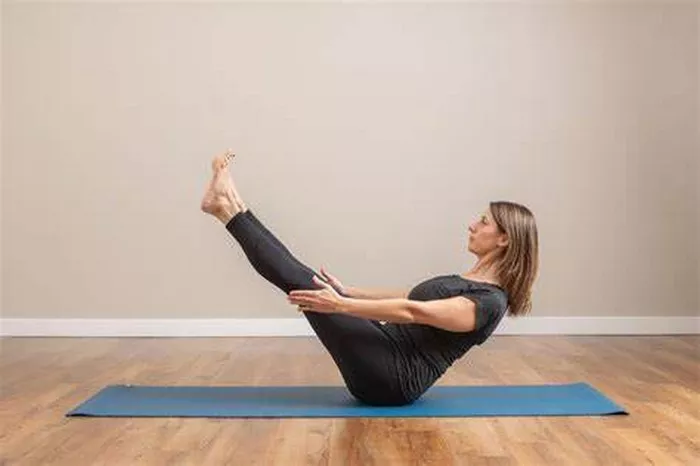Pregnancy is a transformative journey filled with joy, anticipation, and change. For many women, yoga is a trusted companion throughout this period, offering physical benefits, mental calm, and a sense of connection to their changing bodies. However, when it comes to practicing yoga in the first trimester, caution is crucial. This article explores the yoga poses that should be avoided during the first trimester, why they pose risks, and what alternative practices can support a healthy and mindful pregnancy.
Understanding the First Trimester and Yoga
The first trimester of pregnancy, spanning from weeks 1 to 13, is a period of rapid development for the baby and significant hormonal changes for the mother. During this time:
- The embryo implants and begins to develop critical structures such as the brain, heart, and spinal cord.
- The mother’s body undergoes hormonal shifts to support the pregnancy, often leading to fatigue, nausea, and mood changes.
- The risk of miscarriage is highest during this phase, which underscores the need for careful physical activity.
While yoga can be immensely beneficial during pregnancy, the first trimester requires a mindful approach. The goal is to avoid poses that may strain the body, compress the abdomen, or increase the risk of overheating or injury.
General Guidelines for First-Trimester Yoga
Before diving into specific poses to avoid, here are some general principles to keep in mind for yoga during the first trimester:
Consult Your Healthcare Provider: Always check with your doctor or midwife before starting or continuing a yoga practice during pregnancy.
Focus on Gentle and Restorative Practices: Prioritize poses that promote relaxation and reduce stress rather than intense physical effort.
Listen to Your Body: Pay attention to signals such as discomfort, dizziness, or fatigue, and avoid pushing yourself beyond your comfort zone.
Avoid Overheating: Pregnancy increases your core body temperature, and overheating can be dangerous for the developing baby. Practice in a cool, well-ventilated space.
Modify When Necessary: Use props like blocks, bolsters, or blankets to adapt poses to your changing body and needs.
Yoga Poses to Avoid in the First Trimester
Here is a comprehensive list of yoga poses that are best avoided during the first trimester and why:
1. Deep Twists
Examples: Marichyasana III (Seated Twist), Parivrtta Trikonasana (Revolved Triangle Pose), Parivrtta Ardha Chandrasana (Revolved Half Moon Pose)
Why Avoid:
Deep twists compress the abdomen, which can potentially reduce blood flow to the uterus and place unnecessary pressure on the developing embryo. Twisting poses also risk overstretching the ligaments, which become more elastic due to the hormone relaxin.
Alternatives: Gentle open twists that do not compress the abdomen, such as a seated twist with the chest lifted and the twist focused in the upper back.
2. Backbends
Examples: Urdhva Dhanurasana (Wheel Pose), Dhanurasana (Bow Pose), Kapotasana (Full Camel Pose)
Why Avoid:
Deep backbends can overstretch the abdominal muscles, which are already beginning to accommodate the growing uterus. This can lead to discomfort or even diastasis recti (separation of the abdominal muscles).
Alternatives: Mild backbends like Bhujangasana (Cobra Pose) or supported Setu Bandhasana (Bridge Pose) using a bolster.
3. Inversions
Examples: Sirsasana (Headstand), Sarvangasana (Shoulder Stand), Adho Mukha Vrksasana (Handstand)
Why Avoid:
Inversions pose a risk of falls, which could harm both mother and baby. Additionally, they may increase intra-abdominal pressure, which is best avoided in the early stages of pregnancy.
Alternatives: Gentle poses that promote circulation and relieve swelling, such as Viparita Karani (Legs-Up-the-Wall Pose).
4. Intense Core Work
Examples: Navasana (Boat Pose), Urdhva Prasarita Padasana (Leg Lifts), Plank Variations
Why Avoid:
Engaging in intense core-strengthening poses can strain the abdominal muscles and lead to discomfort or diastasis recti. The first trimester is not the time to focus on developing core strength.
Alternatives: Gentle core engagement through breathwork, such as diaphragmatic breathing or pelvic tilts.
5. Poses with Significant Abdominal Compression
Examples: Paschimottanasana (Seated Forward Bend), Balasana (Child’s Pose with Deep Compression), Supta Baddha Konasana (Reclined Bound Angle Pose with Pressure on the Abdomen)
Why Avoid:
Poses that compress the abdomen can interfere with blood flow to the uterus and cause discomfort. While these poses may seem innocuous, even slight pressure on the abdomen should be avoided during the first trimester.
Alternatives: Modify forward bends by widening the legs to make space for the abdomen or use props to reduce compression.
6. High-Impact or Vigorous Flow Sequences
Examples: Power Yoga, Vinyasa Sequences with Jumping Transitions
Why Avoid:
The first trimester is not the time for vigorous flows that elevate the heart rate excessively or involve sudden movements. High-impact activities can strain the joints, which are more vulnerable due to relaxin, and increase the risk of overheating.
Alternatives: Slow, mindful flows with emphasis on breath and gentle transitions.
7. Lying Flat on the Back for Extended Periods
Examples: Savasana (Corpse Pose), Supta Virasana (Reclined Hero’s Pose)
Why Avoid:
Lying flat on the back can compress the inferior vena cava, the large vein that carries blood back to the heart from the lower body. This can lead to dizziness, shortness of breath, or reduced blood flow to the baby.
Alternatives: Modify Savasana by lying on the left side with a bolster or pillow for support.
8. Hot Yoga
Examples: Bikram Yoga, Heated Vinyasa Classes
Why Avoid:
Practicing in a heated environment increases the risk of overheating, which can be dangerous for both mother and baby. Pregnancy already elevates body temperature, so additional heat can cause dehydration or dizziness.
Alternatives: Practice in a cool, well-ventilated space with ample hydration.
Safe Yoga Practices for the First Trimester
While certain poses and practices should be avoided, there are many gentle and beneficial options for pregnant women in their first trimester. Here are some yoga poses and techniques that can support your well-being:
1. Breathwork (Pranayama)
Gentle breathing exercises, such as diaphragmatic breathing and Nadi Shodhana (Alternate Nostril Breathing), can help calm the mind, reduce stress, and improve oxygen flow.
2. Gentle Stretches
Cat-Cow Pose: Increases spinal flexibility and relieves lower back tension.
Side Stretches: Opens the side body and improves breathing capacity.
3. Grounding Poses
Sukhasana (Easy Pose): Promotes relaxation and mindfulness.
Malasana (Yogic Squat): Stretches the hips and pelvis gently (use props for support if needed).
4. Restorative Poses
Supported Child’s Pose: Use a bolster to avoid abdominal compression while relaxing the lower back.
Legs-Up-the-Wall Pose: Eases swelling in the legs and promotes circulation.
Tips for Practicing Yoga Safely During the First Trimester
Communicate with Your Instructor: If attending a yoga class, inform your teacher about your pregnancy so they can offer modifications.
Use Props Liberally: Props can make poses more accessible and comfortable.
Stay Hydrated: Drink water before, during, and after your practice.
Avoid Overstretching: Relaxin makes ligaments more elastic, so be mindful not to overstretch or go beyond your usual range of motion.
End with Relaxation: Finish your practice with a supported relaxation pose to calm the nervous system.
Final Thoughts
Yoga can be a wonderful tool for maintaining physical and emotional balance during pregnancy, but the first trimester requires a careful and thoughtful approach. By avoiding poses that compress the abdomen, involve intense physical effort, or pose risks of overheating or injury, you can create a safe and nurturing practice. Always listen to your body, honor its needs, and prioritize gentle, restorative movements.
Remember, pregnancy is not the time to push your limits; it’s a time to cultivate mindfulness, self-compassion, and connection with your growing baby. With the right modifications and precautions, yoga can remain a source of strength and peace throughout this transformative journey.
Related Topics:























